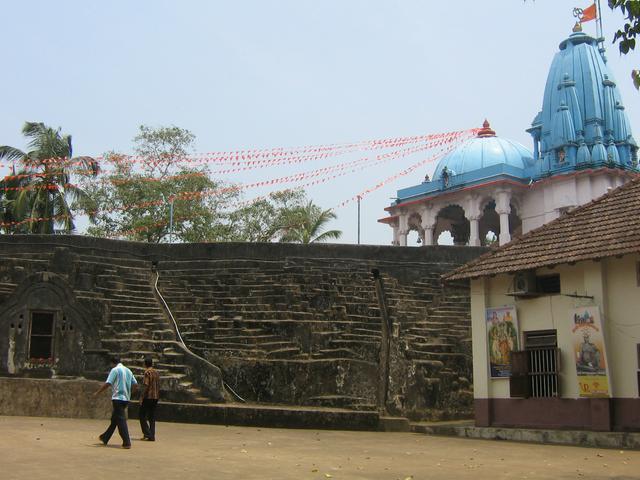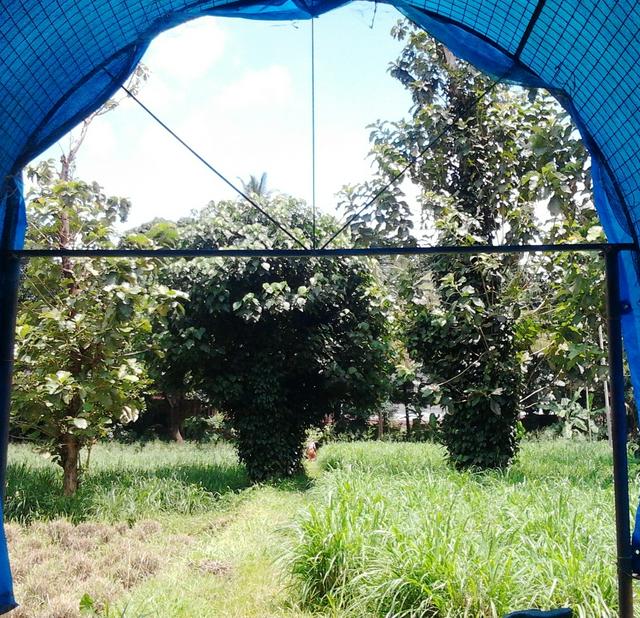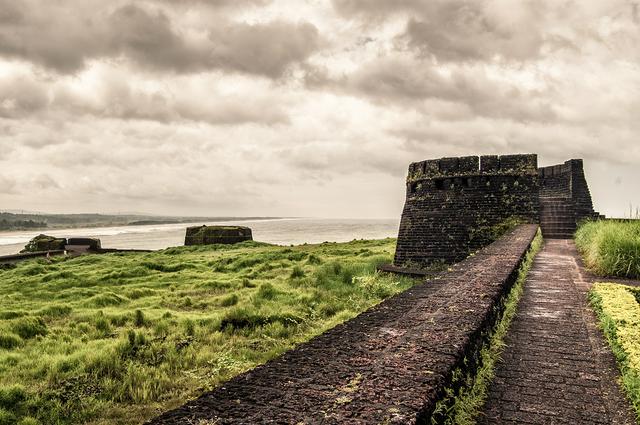Kanhangad hosts a number of significant and important tourist sites. A separate administrative unit called Bekal tourism development Corporation has been set up under KTDC to improve the tourism facilities in the region. Major tourist sites include:
- Sree Madiyan Koolom Temple- is a 500-year-old temple situated in Ajanur panchayat. It is about five kilometres from Kanhangad, the headquarters of Hosdurg Taluk. The main deity of the temple is Bhadrakali; but there are also other deities like Kshetrapalan, Bhagavathi and Bhairavan. A peculiarity of this temple is that a Brahmin priest performs pooja only in the noon, while the morning and evening poojas are performed by a sect called Maniyanis. The festivals in the temple include Kalasham which falls during the months of Edavam (May, June) and Paatulsavam during Dhanu (December, January) and on these days all the poojas are performed in connection with this festival. The temple is known for its sculptures and wooden carvings which depict the ancient stories from Ramayana and other epics. It also has a depiction of many mythical characters. The use and combination of natural colours obtained from unique plants and trees enhance the aesthetics of the carvings. A mural painting of the Narasimha avatar of Lord Vishnu is another attraction. The temple houses two ponds. Unfortunately, the temple paintings and carvings are in the stage of complete deterioration due to recklessness and negligence of the Malabar Devaswom board.
- Nityananda Ashramam, which is situated on the hillock about half a kilometre south of the Hosdurg taluk office, was founded by Swami Nityananda. The spot was at first part of a forest area. Here Swami Nityananda constructed 45 guhas (caves) on a mountain slope. There is a temple built in 1963, after the style and design of the Somanatha Temple in Gujarat. A full-size statue of Swami Nityananda in sitting posture made of panchaloha is one of the attractions of the asramam.

- Ananda Ashramam, situated about five kilometres east of the Kanhangad Railway Station, was founded in 1931 by Swami Ramdas, a great Vaishnava saint of modern times. The main ashram and other buildings are set in the midst of shady mango, coconut and other groves. There is a hill to the east of the asramam, to which the devotees retire for quiet meditation and from its west, the surrounding landscape can be seen.

- Manjapothi Hills - Manjapothi or popularly called as Manjapathi derived its name from two words Manju which means snow and Pothi means to cover in Malayalam. Thus it literally translates to 'hill covered by snow', even though this happens only during winter season considering the tropical climate of the region. It is near Kalyan road in Mavungal, located 5 km from Kanhangad railway station. Its scenery attracts people from in and around the place; who usually come to view the sunset. Its proximity to the nearby pilgrim centre Anandashram increases its prominence. This reason also accounts for the fact that people from ashram sometimes prefer it as a place for meditation. A temple dedicated to Lord Hanuman also increases its importance. Chirutheyi Cave here is another attraction and some other smaller caves are used for generating drinking water. Amrita Vidyalam is also near to this hill. Due to lack of maintenance and ignorance by the authorities, there had been instances of destruction of some parts of the hill. It is usually visited during Monsoon season accounting for its greenery and sometimes during the winter season.
- Guruvanam - A forest area with a serene atmosphere with a temple at the centre of the forest. It also has a cave built by Swami Nityananda and a stream of water called Papanasha Ganga that originates from the hills surrounding the temple. It is also blessed with biodiversity and has unique herbal plants. It is now vulnerable to the recent development activities in the surrounding areas which are posing a threat to the biodiversity.
- Hosdurg Fort, Known for its chain of forts built by Somashekara Nayak of Ikkeri dynasty, Hosdurg Fort is the landmark of Kanhangad in Kasaragod. Also known as Kanhangad Fort, the fort with its round bastions looks imposing from a distance. There is a temple attached to the fort, Karpooreshwara temple. The place was made well known by the Nithyanandashram, an internationally recognized spiritual centre with 45 caves. Every year many tourists visit this fort.
- Art gallery of Kerala Lalithakala Akademi at Kanhangad which arranges exhibitions of paintings and sculptures by various artists.
- Bekal Fort- built by Shivappa Nayaka of Keladi in 1650 AD, at Bekal. It is the largest fort in Kerala, spreading over 40 acres (160,000 m2). It is 11 km from Kanhangad town.

- Pallikkara Beach Park - A park at Pallikkara, Bekal near to the historical Bekal Fort is a preferred location by the people of the localities for enjoying with the family. It also has children parks and restaurants. There are also star hotels near the park.
- Our Lady of Sorrows Church - It is the oldest church in the district built in 1890 CE. It lies 15 km north of Kasargod. This Gothic-style Roman Catholic church which is under the Mangalore Diocese has celebrated its centenary recently and also renovated.
- Kareem Forest- situated at Puliyam Kulam, Parappa (23 km from Kanhangad). 32 acres filled with medicinal plants, birds, insects, reptiles, amphibians and small animals.
- Ranipuram - A hill station located 45 km from Kanhangad. It is known as "Ooty of Kerala". Ranipuram is adjacent to Kottancheri-Talakaveri mountain range and is a protected area in the Western Ghats of Kasaragod. Until the 1970s, Ranipuram was known as Madathumala.
- Kottancheri Hills- Located 45 km eastwards of Kanhangad.The Talakaveri Hills are very near to Kottancheri Hills.
